Santiago Calatrava is a Spanish-born artist and international architect known for his organic designs of train stations, bridges, and museums. He designed the World Trade Center Oculus in New York City’s Financial District.
Calatrava’s architectural firm has an office in New York. His art is represented by Marlborough Gallery.
Santiago Calatrava Puts Emotion into Motion
Marlborough Gallery in Midtown is showing recent works by Calatrava from May 10 through June 17, 2017. There is a reception for the artist on Tuesday, May 16 at 6pm.
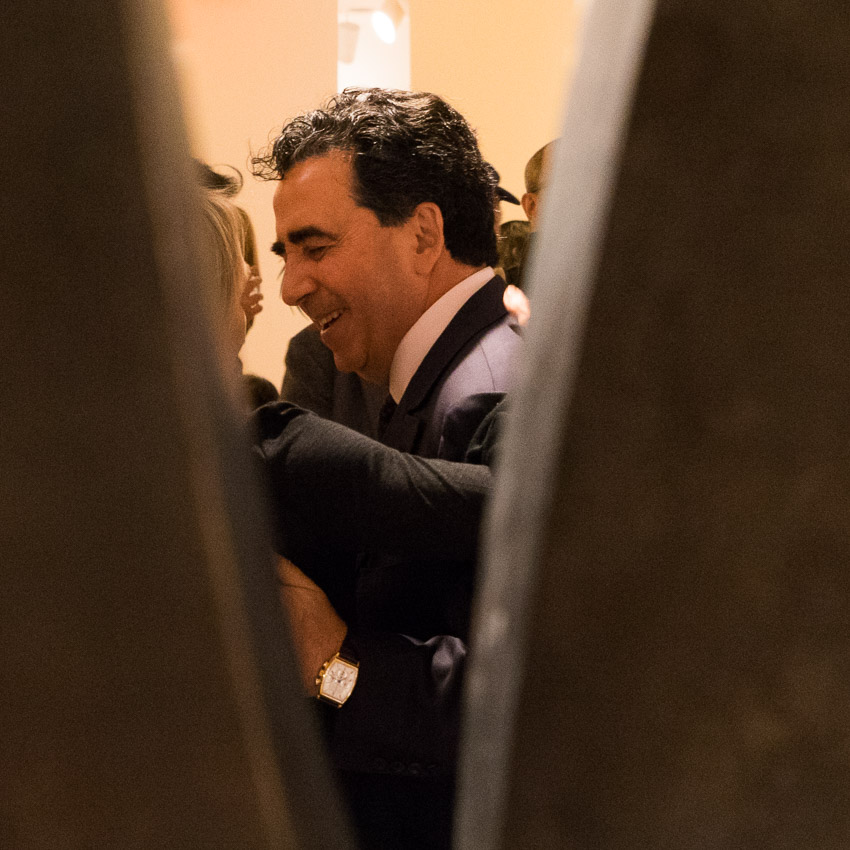
Many friends and associates came to greet the artist.
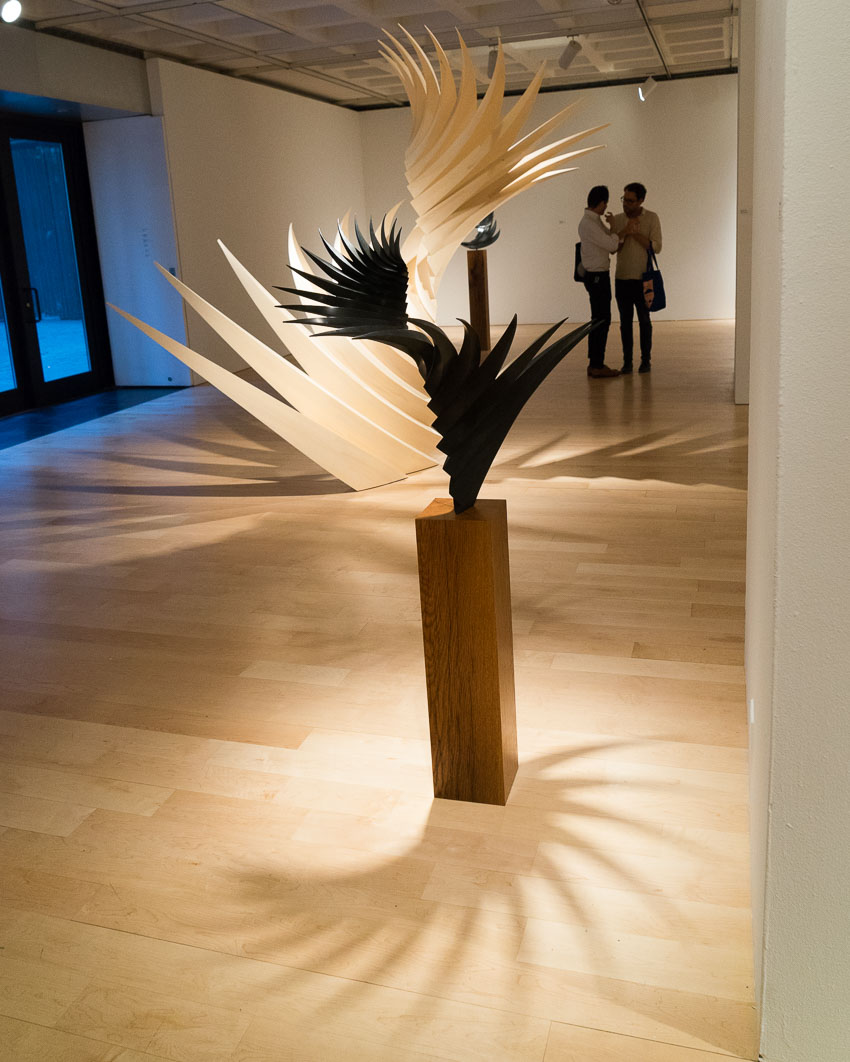
Some of the work resembles flames rising through a firestorm.
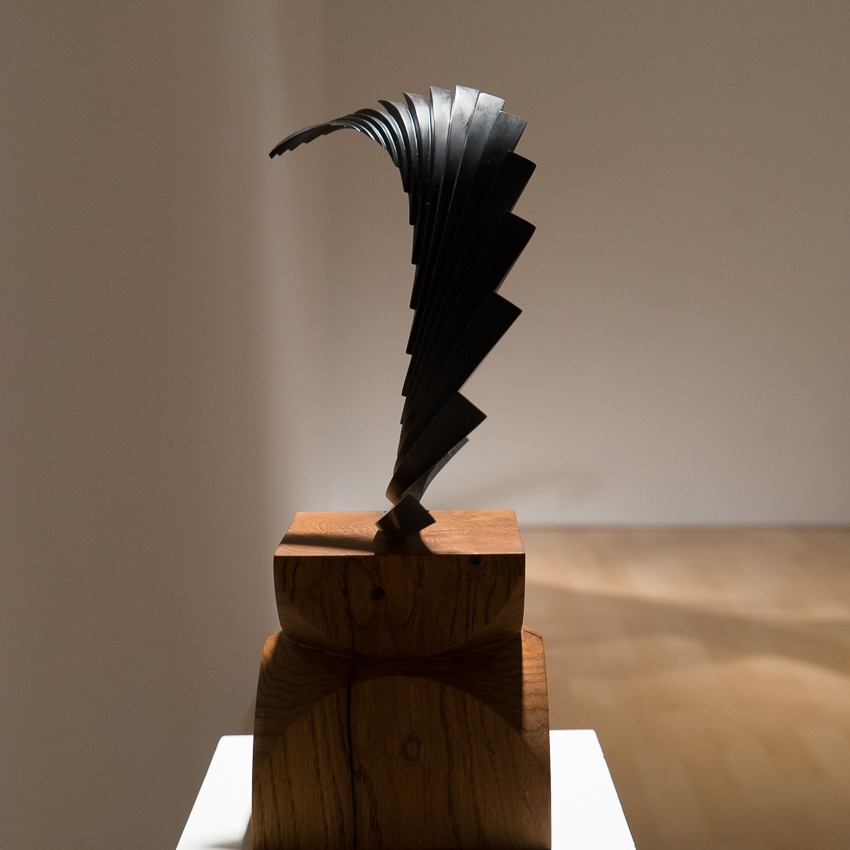
Some of the work resembles the tail feathers of a cock.
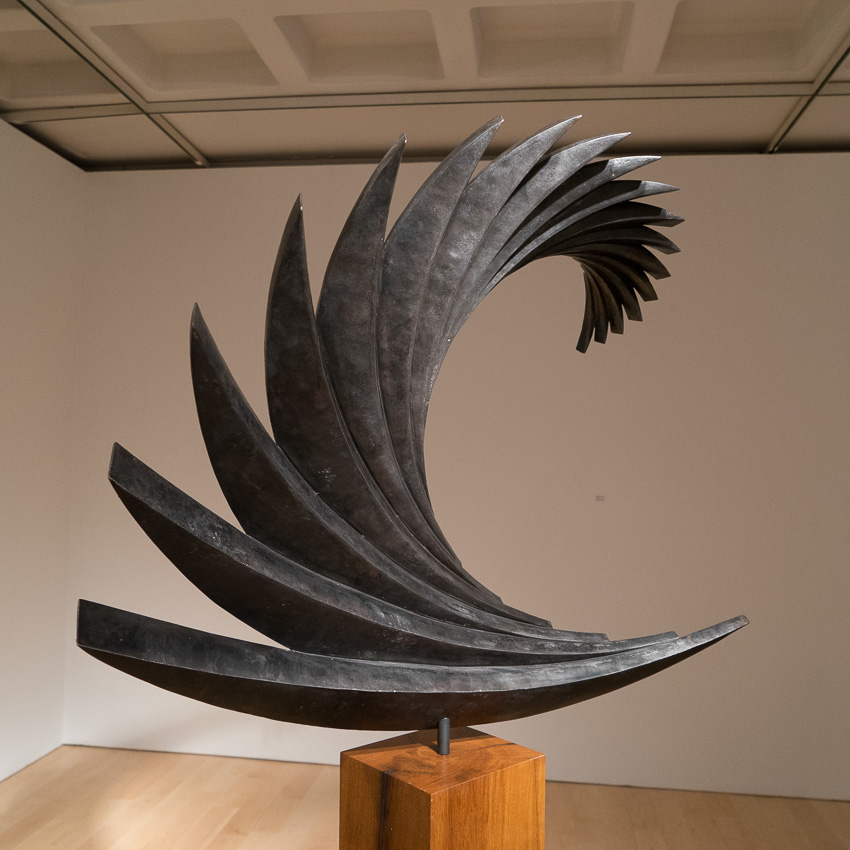
Some of the work feels like a wave on a beach in Valencia.
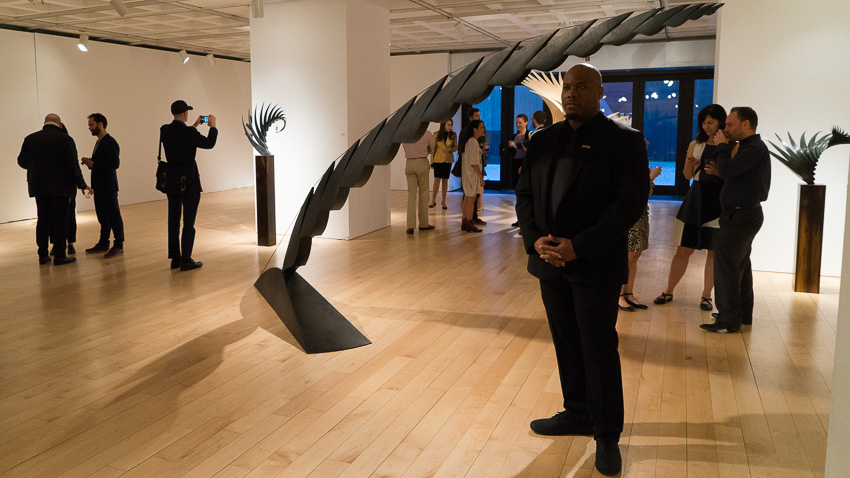
A plume that looks desk-sized on Marlborough’s web site is actually tall enough to stand under.
The pieces in Santiago Calatrava’s exhibition seem to come alive through their natural interplay with light and shadow. The man who so elegantly captures and releases emotion in metal, wood, and concrete is certainly one of the most interesting artist-architects of our time.
A catalog is available. For more information, visit www.marlboroughgallery.com
Calatrava is the master of architecture that seems to fall up
Calatrava leaps over the cold modernism of Swiss-French architect Le Corbusier (1887-1965) by uniting the organic forms of Catalan architect Antoni Gaudí (1852-1926) with the cleverly engineered aesthetics of Swiss bridge builder Robert Maillart (1872-1940).
Le Corbusier’s simple geometries look good on an architectural model, but are destructive to the human spirit when built. Calatrava’s organic forms are warm and welcoming so where Le Corbusier’s public architecture fails, Calatrava succeeds.
Calatrava’s art is filled with the Latin flair for motion. His designs are very alive, yet his skeletal frameworks also remind us of the ephemeral nature of life. In a million years, an archeologist will dig up a Calatrava structure and wonder what type of creature she has found.
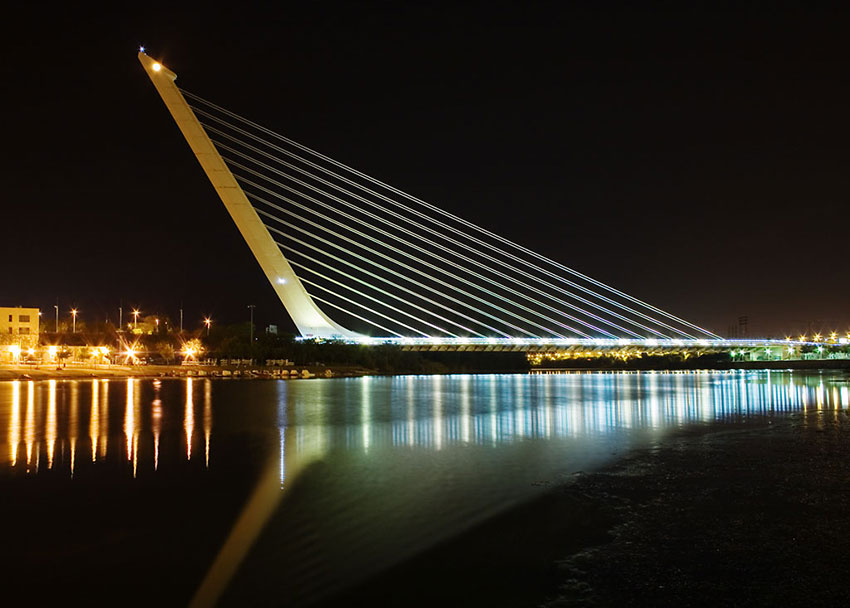
Calatrava began designing transportation structures in Europe in 1983. His single pillared Puente del Alamillo bridge in Seville, Spain (1992) was an engineering masterpiece that gained international attention. The striking design used less steel cable to support the bridge.
Puente de la Mujer in Puerto Madero, Buenos Aires has a similar design. The bridge is named after the many streets with women’s names in the neighborhood. Calatrava has said it is an expression of the Tango. The Tangueros are very proud of that.
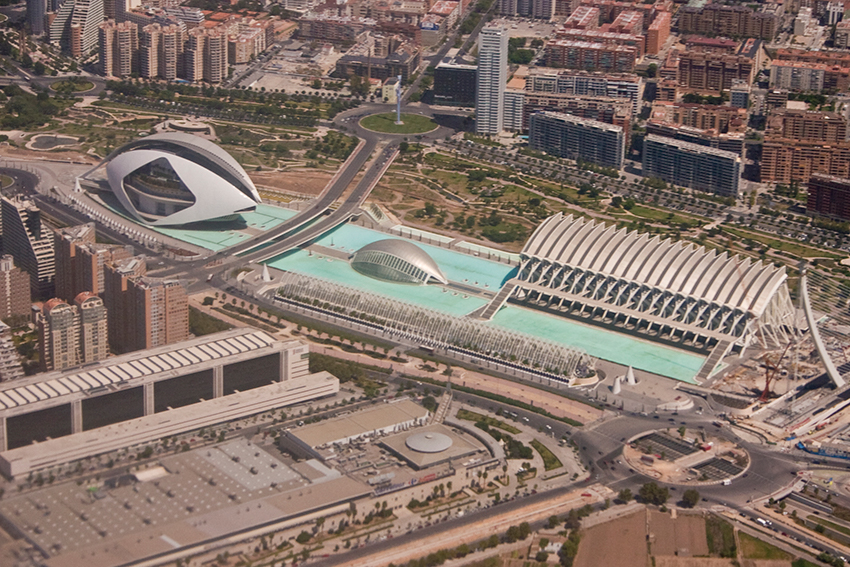
The City of Arts and Sciences (1998-2005) in the artist’s home town of Valencia, Spain is the largest group of Calatrava’s buildings.
The Quadracci Pavilion at the Milwaukee Art Museum (2001) is one of his most famous projects. In it you can see a relation with the WTC Oculus.
Calatrava’s Turning Torso (2005) in Malmö, Sweden was based on a marble sculpture of a twisting figure. It is the world’s first twisting skyscraper.
World Trade Center Oculus
Calatrava designed the Oculus of the World Trade Center Transportation Hub (2016). At first glance the design looks rather like the ribs of a giant dinosaur skeleton. It is actually a rather Futurist rendering of doves being released into the air.
This article was originally published on May 4, 2017.
